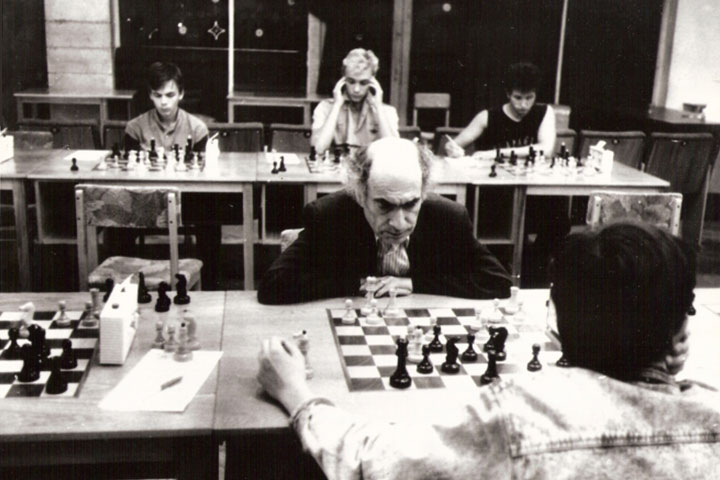


Moscow, November 14, 1991. The 58th USSR Championship has just finished and there is a glittering prize distribution ceremony. Players and spectators are exchanging bonhomie even as music is played. Amidst all this festivity you see an old man perched on a chair. He sits motionless, lost in a reverie. When had he played like these boys? 35 years ago! He was only 20 and already crossing swords with Averbakh, Boleslavsky and Ragozin, not to mention his own peers, Korchnoi, Spassky and Polugaevsky. Here in this Championship, his performance is nothing to write home about. In a field of 64 players, he has shared 39th to 49th places and the score, 5/11 (+1 -2 =8)! Yet he would not have missed it for anything in the world.
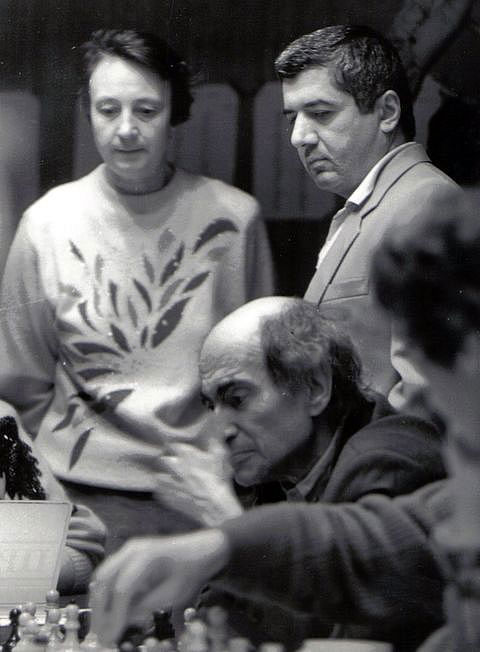
“I can still play!” Onlookers are Rafael Vaganian and Ms Rimma Bilunova | Photo Credit: chesspro.ru
He has delighted in the play of the young, commiserated with the old, never complaining about anything.
There is also a touching moment. One day (November 9th) a young man he has known since he was a kid walks over to him and says, “I am glad I played so well on your birthday. I am dedicating my game to you!”
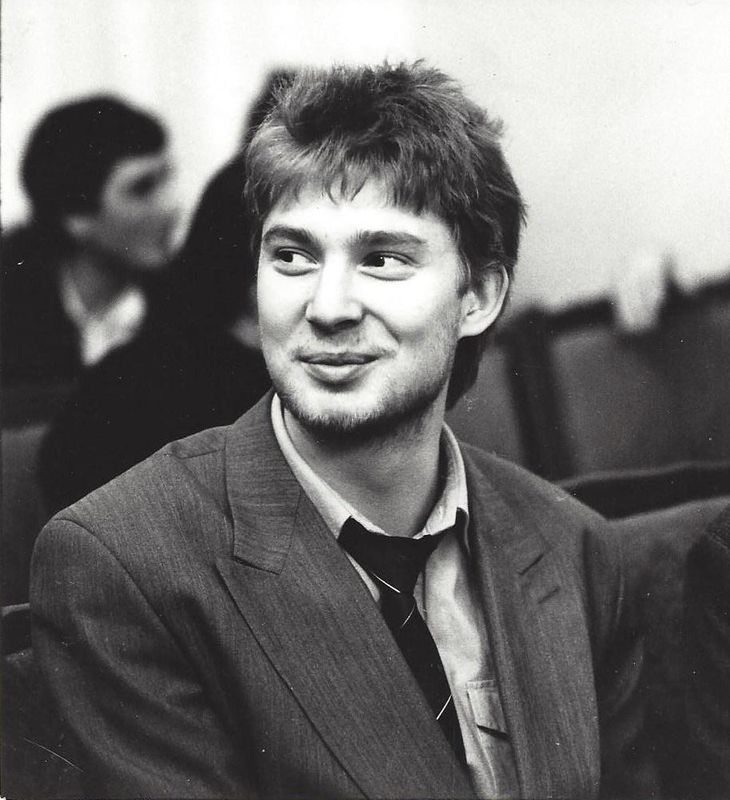
Alexei Shirov | Photo: www.chesspro.ru
A stunning performance that reminds the old man of his own younger days! He who had once won this USSR Championship as many as six times now revels in the sights and sounds of these new battles, never mind his own result. Together with friend and companion, Vaganian he also writes a report on the championship for New in Chess Magazine recreating the whole drama of the tournament. The old man, as the readers guessed, is Misha Tal.
It’s with regret that I put the rest of the narrative in the past tense.
On January 1, 1992, the Soviet Union ceased to exist. It was preceded and followed by a turmoil never known before or since. Amidst this chaos, Misha moved to Germany with his wife and daughter. An ardent fan had provided him and the family a house for free. But Misha’s heart belonged to Riga and Moscow. He would return to Moscow every now and then for medical tests. In the summer of 1992, he was again admitted to hospital. This time was a game of dice with Death itself. He who had forever gambled with life now found himself on the brink of defeat. His restless spirit still yearned for chess.
What happened next is a story oft repeated. One fine morning the hospital staff found the bed empty and there was a frantic search. Where was Tal? He had escaped to play a blitz tournament in which Garry himself was playing:
That was his last bow. By then his condition had deteriorated. Slowly he lost his consciousness and life ebbed away from his frail body. Over the years it had submitted to every impossible demand that his indomitable will had made on it and now could not take it any more. He breathed his last on July 28th, 1992.
Kirillov had lost his friend and idol. Even in that moment of shock and grief, he did not lose his sense of responsibility. It’s a token of his integrity that both wives of Tal and the children reposed their faith in him for making the final arrangements for Misha’s burial in Riga. It did not end there. He devoted the rest of his life to prepare a complete collection of Tal’s games. The chess world owes a debt to him for preserving the legacy of Tal.
Misha was not without his critics in his lifetime or thereafter. Paradoxically some were admirers-turned critics. Emanuel Sztein, in particular, made a searing indictment of Tal. He wrote:
Tal was a bit of pushover. He was powerless off the board. He would let soviet chess administrators boss him around. You could say they wound up outplaying him.
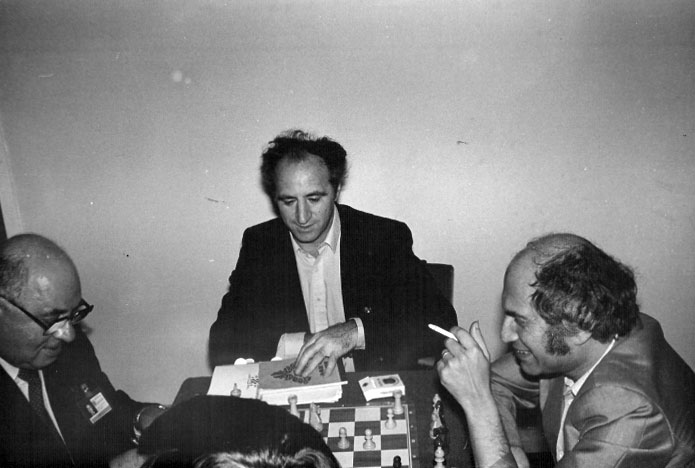
Tal at an offhand game with Viktor Baturinsky, the boss and GM Lev Polugaevsky | Photo: chesspro.ru
In this book, Kirillov makes a brave attempt to defend his departed friend against such criticism. He maintains, Tal made no more compromises than necessary. It was just a way of survival in the system. Anyone who defied it paid the price and ran the risk of becoming a nobody shunned by everyone.
The black-and-white images take up a great deal of space in the book. Many of them are worth it. They have not been seen before.
I was particularly enamoured of a picture by late Galina Satonina (1905-2000). Here is the original painting:
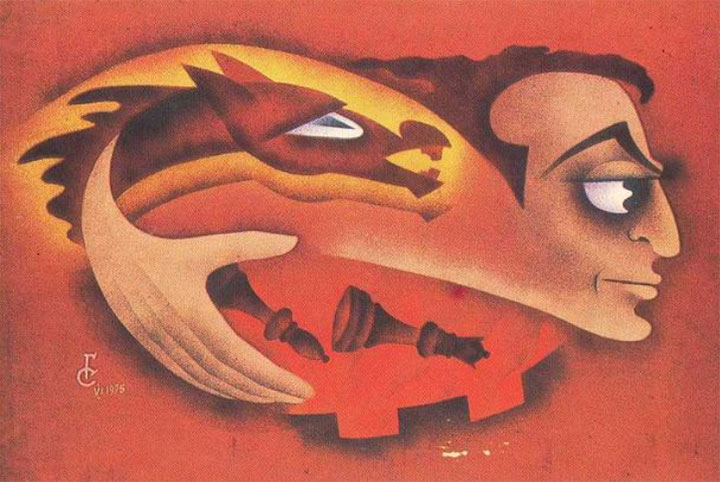
Forever in flight | Photo: Valerij Surkov, Live Journal
This brings me to the limitations of the book. The title is a bit of misnomer. Essentially, this is a Kirillov story. In this context, the writing on other players Janis Klovans and Aivars Gipslis appears rather superfluous. The same cannot be said of Alvins Vītoliņš who adored Tal and took after him in style. So he certainly deserves his place in this book.
Alvins Vītoliņš (1946-1997) met with a tragic end. Suffering from depression, he committed suicide. Genna Sosonko wrote a moving essay, The Jump in his book, Russian Silhouettes (New in Chess, 2001)
We have now reached the end of our journey. Kirillov could bring himself to write this work only in his last days. By then he was critically ill and the task was by no means easy. However, after much persuasion by Alexei Shirov, he was able to write these reminiscences of Tal.
In a way that explains the uneven quality of writing (often one has to wade through a rambling narrative that moves back and forth). On occasion the writing is pedestrian. A case in point is his description of the Riga Interzonal 1979 that Tal won. A more illuminating story is provided by Kapengut [in Russian] who acted as Tal’s second for this tournament. (The English version had first appeared in New in Chess Magazine, 2007/1).
This little book offers quite a few signposts for Tal fans to follow. The discerning reader would do well to reflect on the pauses and the gaps that Kirillov did not wish to fill in. He was a loyal friend, after all.
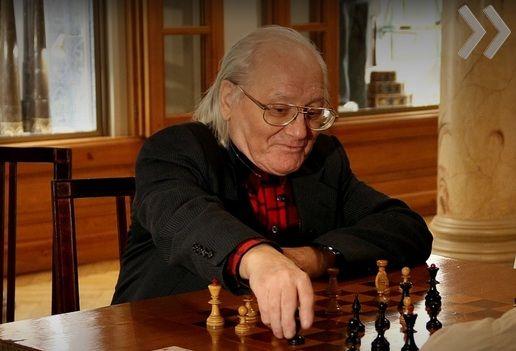
Kirillov | Photo: vesti.bb.lv
Recommended.
A preview of the book, courtesy New in Chess (PDF)
I owe a special debt to Mr.Raymond W. Rozman, Special Collections Librarian, Cleveland Public Library, USA. He offered a pdf copy of the report on the 1991 USSR Championship by Tal and Vaganian that appeared in New in Chess Magazine, issue, 1992/2.
Cleveland Public Library houses the famous John G. White Collection on chess and checkers: https://cpl.org/